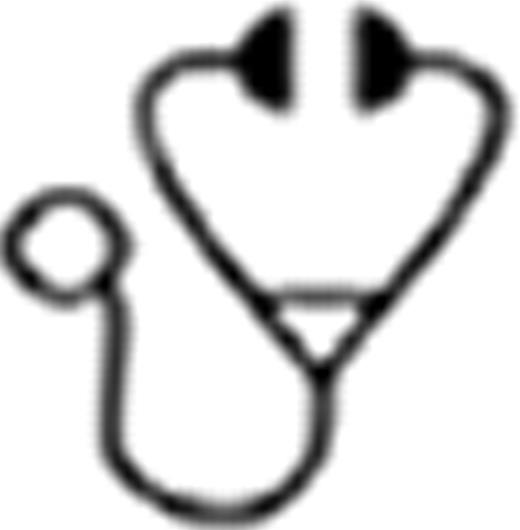Abstract
Clofarabine is a second generation nucleoside analogue with activity in adults with AML. A recent randomized phase III study in relapsed AML showed higher response rates and better event-free survival (EFS) with the combination of clofarabine and cytarabine (CA) compared to cytarabine alone. A phase I/II trial of CIA in patients with relapsed/refractory AML had shown an overall response rate (ORR) of 38% (21% CR; 11% CRp). To explore this combination further, we conducted a phase II study of CIA in patients </= 60 years with previously untreated AML.
Eligible were patients >18–60 years with newly diagnosed AML and adequate renal and hepatic function. Patients were excluded for ECOG PS > 2, cardiac ejection fraction < 45%, or active and uncontrolled infection. For the first 30 patients, induction therapy consisted of Clofarabine (C) 22.5 mg/m2 iv daily (days 1–5), Idarubicin (I) 6 mg/m2 daily (days 1–3), and Cytarabine (A) 0.75 g/m2 daily (days 1–5). From patients 31 onward, induction doses were amended to C 20 mg/m2 × 5, I 10 mg/m2 × 3, and A 1 g/m2 × 5. Patients who did not achieve CR following induction could receive one re-induction course. Patients in CR/CRp/CRi continued with up to 6 consolidation cycles (C 22.5 mg/m2 × 3, I 6 mg/m2 × 2, and A 0.75 g/m2 × 3, subsequently amended to C 15 mg/m2 × 3, I 8 mg/m2 × 2, and A 0.75 g/m2 × 3).
From April 2010 until February 2012, 59 patients were enrolled (Table 1). Fifty-seven patients were evaluable. Forty-two patients (74%) achieved CR and 3 (5%) CRp for an overall response rate of 79%. Ten patients required a re-induction {4/10 (40%) patients achieved CR, 2/10 (20%) achieved CRp). All patients received a median of 2 cycles (1–8 cycles), 24 (42 %) patients proceeded with an allogeneic stem cell transplant in first remission. With a median follow up of 10.9 months (1.6 - 23.1), the median OS was not reached, the median EFS was 13.5 months, and the median relapse free survival was not reached.
Most toxicities were < grade 2. Toxicities > grade 2 included nausea (47%), rash (39 %), diarrhea (25%), elevated transaminases (23%), and elevated bilirubin (12%). Myelosuppression was ubiquitous but prolonged myelosuppression > 42 days was infrequent. Four week mortality was 2%. The response rate and toxicity were similar in both dose schedules. In subgroup analysis, patients < 40 years had better OS (HR 0.12, 95%CI, 0.02–0.90, P = 0.04) and EFS (HR 0.12, 95%CI, 0.02–0.93, P = 0.04) compared to patients > 40 years old. Compared to a historical group of patients who were treated with IA combination (I 12 mg/m2 IV daily × 3 plus A 1.5 g/m2 IV daily × 4) and after controlling for age, cytogenetics and other important clinical factors, the OS and EFS were significantly higher (P = 0.005, 0.0001, respectively) for CIA treated patients. Furthermore, in multivariate analysis, CIA retained its superior impact on OS (HR 0.53, 95% CI, 0.29 to 0.97, P =0.03) and EFS (HR 0.40, 95% CI, 0.22 to 0.73, P =0.003) compared to IA.
CIA is an active combination for patients </= 60 years with newly diagnosed AML. Patients < 40 years had significantly better OS and EFS. Compared to IA alone, CIA achieved significantly longer OS and EFS. A randomized comparison with standard induction therapy will be needed to further assess the role of CIA in frontline AML therapy of younger patients.
Patient's characteristics
| Parameter | |
| Patients No. | 59 |
| Median age, years, (range) | 48 (17–60) |
| Median WBC X 109/L, (range) | 3.2 (6–100.2) |
| Median hemoglobin g/dl, (range) | 9.3 (7.3–14.6) |
| Median platelets 103/mL, (range) | 49 (6–270) |
| Median peripheral blood blast %, (range) | 12 (0–94) |
| Median bone marrow blast %, (range) | 42 (3–92) |
| ECOG performance status > 2, No. (%) | 4 (7) |
| AML history, No. (%) | |
| de novo | 40 (68) |
| MDS-related | 10 (17) |
| Therapy-related | 8 (13) |
| Mixed phenotype | 1 (2) |
| Cytogenetic abnormalities*, No. (%) | |
| Diploid | 21 (36) |
| Intermediate | 14 (25) |
| Unfavorable | 20 (34) |
| Insufficient metaphases | 3 (5) |
| Molecular abnormalities, No. (%) | |
| FLT3-ITD | 6 (10) |
| NPM1 | 8 (14) |
| RAS | 4 (7) |
| CEBPa | 4 (7) |
| Parameter | |
| Patients No. | 59 |
| Median age, years, (range) | 48 (17–60) |
| Median WBC X 109/L, (range) | 3.2 (6–100.2) |
| Median hemoglobin g/dl, (range) | 9.3 (7.3–14.6) |
| Median platelets 103/mL, (range) | 49 (6–270) |
| Median peripheral blood blast %, (range) | 12 (0–94) |
| Median bone marrow blast %, (range) | 42 (3–92) |
| ECOG performance status > 2, No. (%) | 4 (7) |
| AML history, No. (%) | |
| de novo | 40 (68) |
| MDS-related | 10 (17) |
| Therapy-related | 8 (13) |
| Mixed phenotype | 1 (2) |
| Cytogenetic abnormalities*, No. (%) | |
| Diploid | 21 (36) |
| Intermediate | 14 (25) |
| Unfavorable | 20 (34) |
| Insufficient metaphases | 3 (5) |
| Molecular abnormalities, No. (%) | |
| FLT3-ITD | 6 (10) |
| NPM1 | 8 (14) |
| RAS | 4 (7) |
| CEBPa | 4 (7) |
Defined as per the MRC criteria
Abbreviations: AML: acute myeloid leukemia, MDS: myelodysplastic syndrome, FLT3-ITD: FMS-like tyrosine kinase-3 internal tandem duplication, NPM1: nucleophosmin 1, CEBPa: CCAAT/enhancer-binding protein alpha.
Off Label Use: Clofarabine in AML. Ravandi:Genzyme: Research Funding. Kantarjian:Genzyme: Research Funding. Faderl:Genzyme: Membership on an entity's Board of Directors or advisory committees, Research Funding.

This icon denotes a clinically relevant abstract
Author notes
Asterisk with author names denotes non-ASH members.

